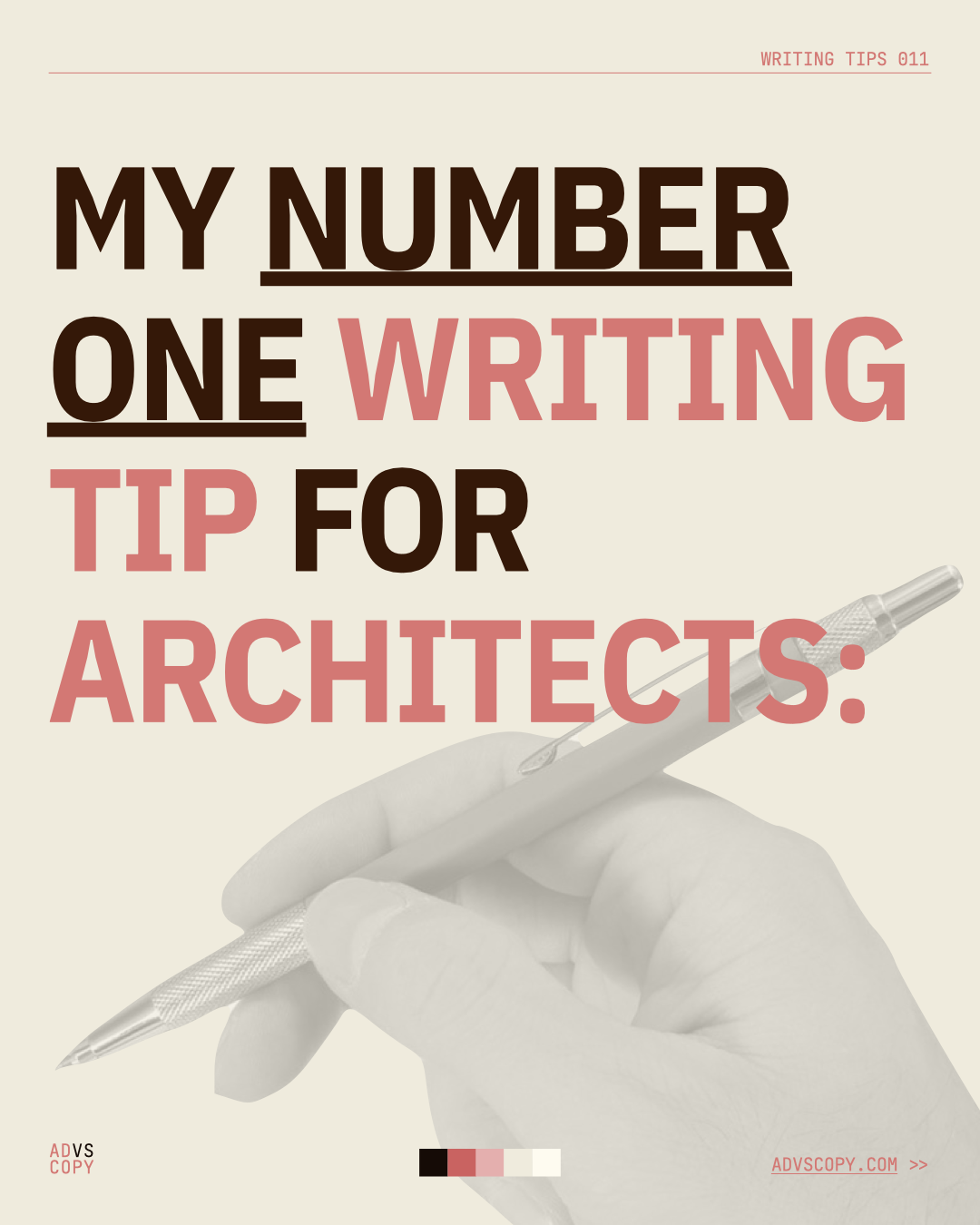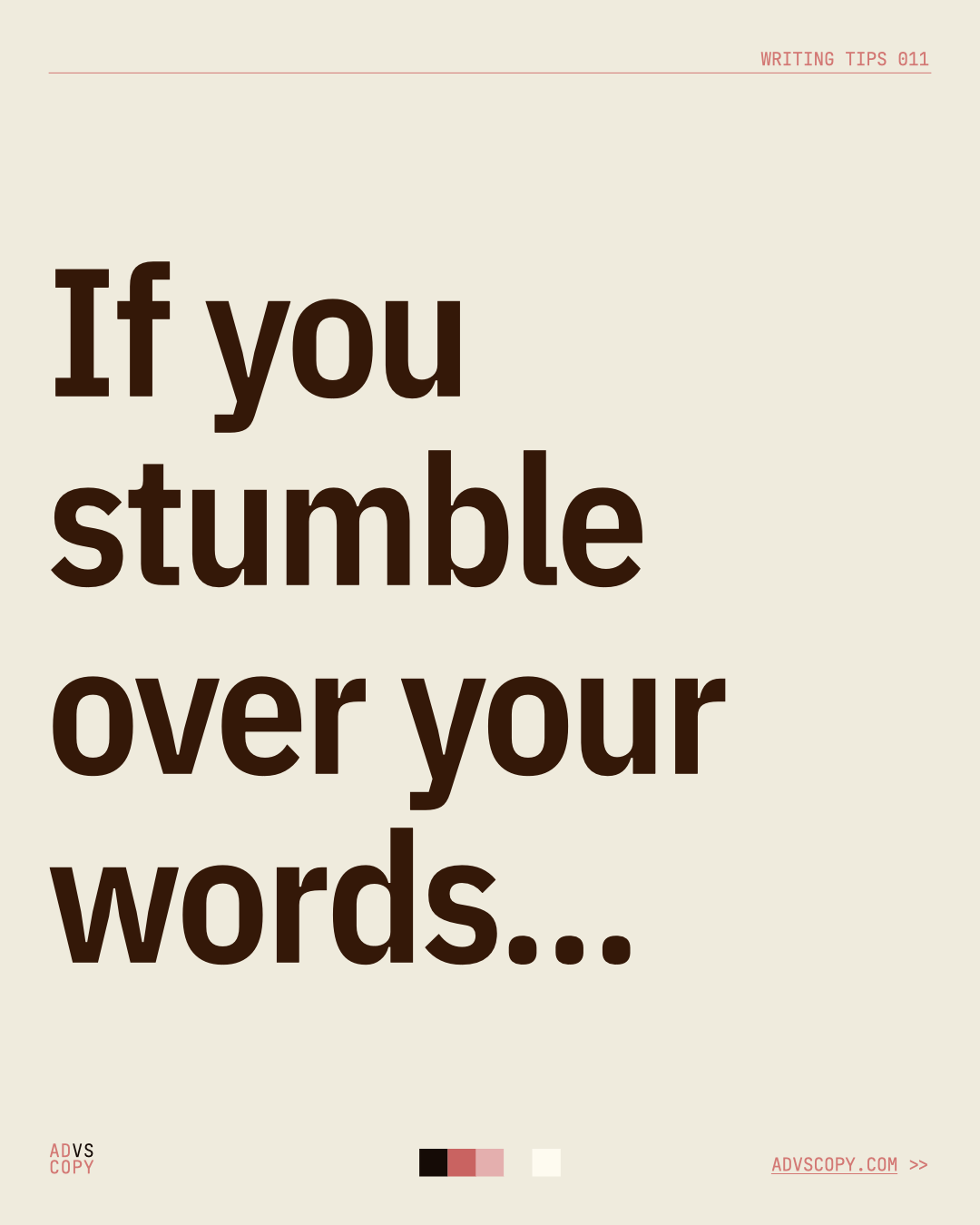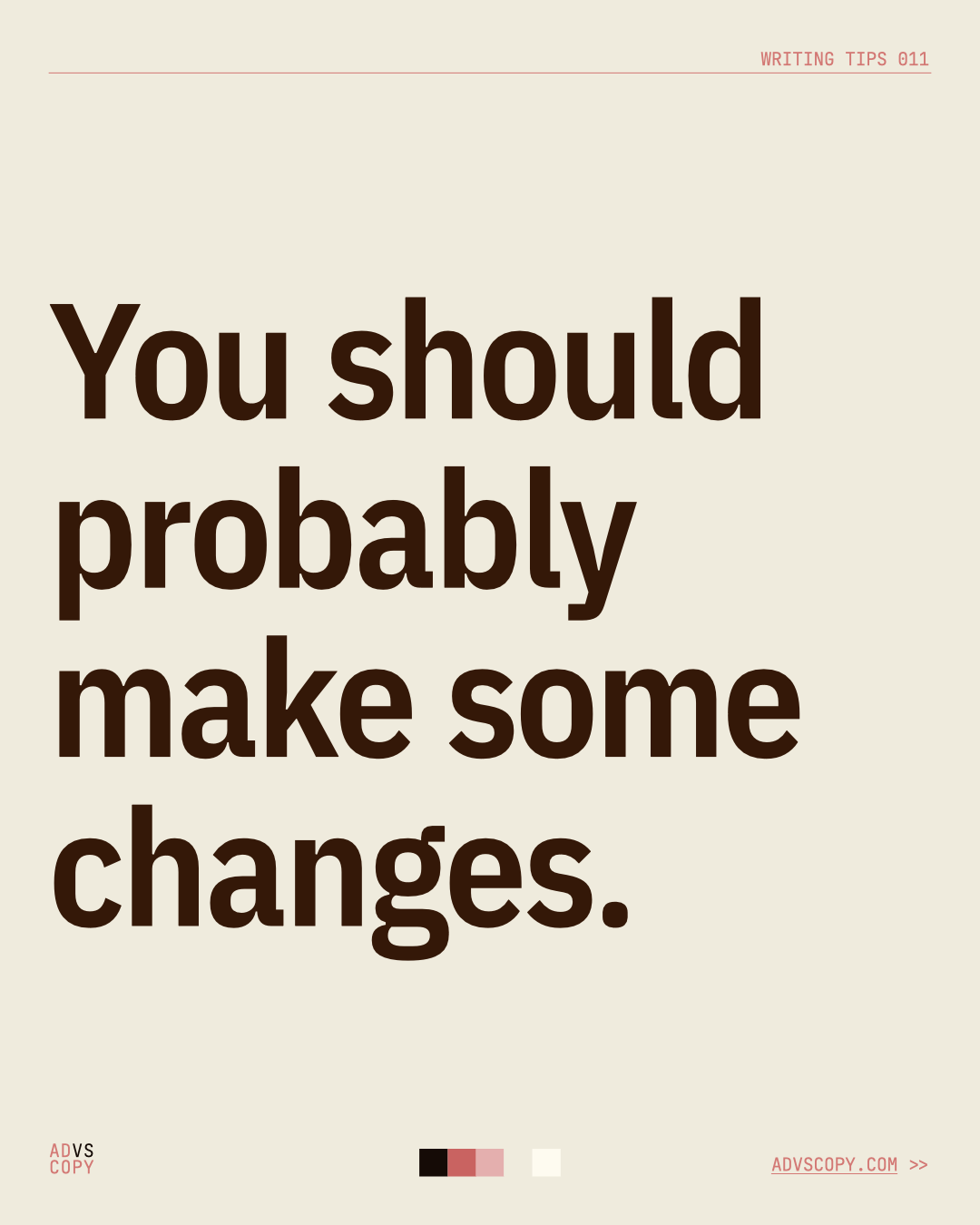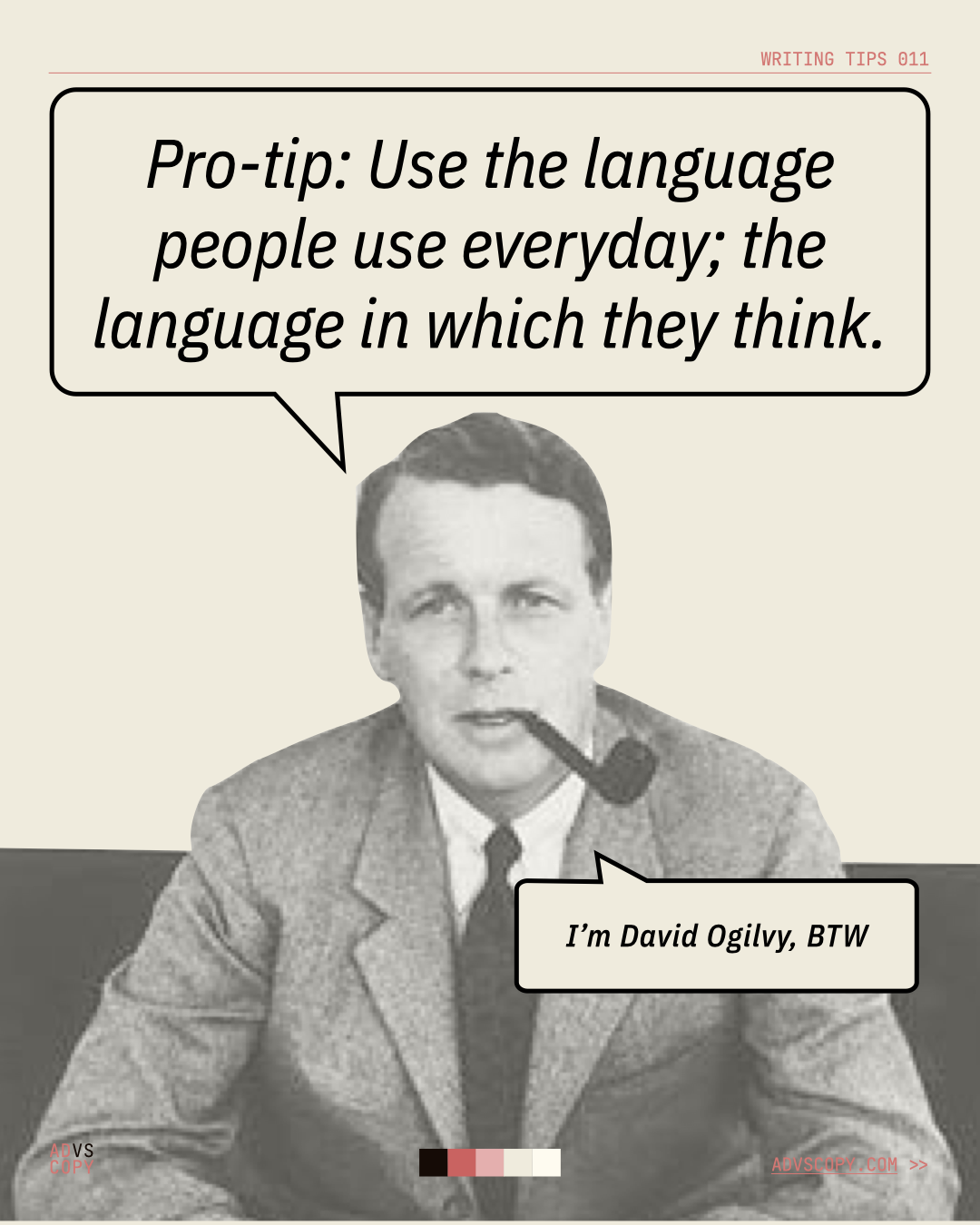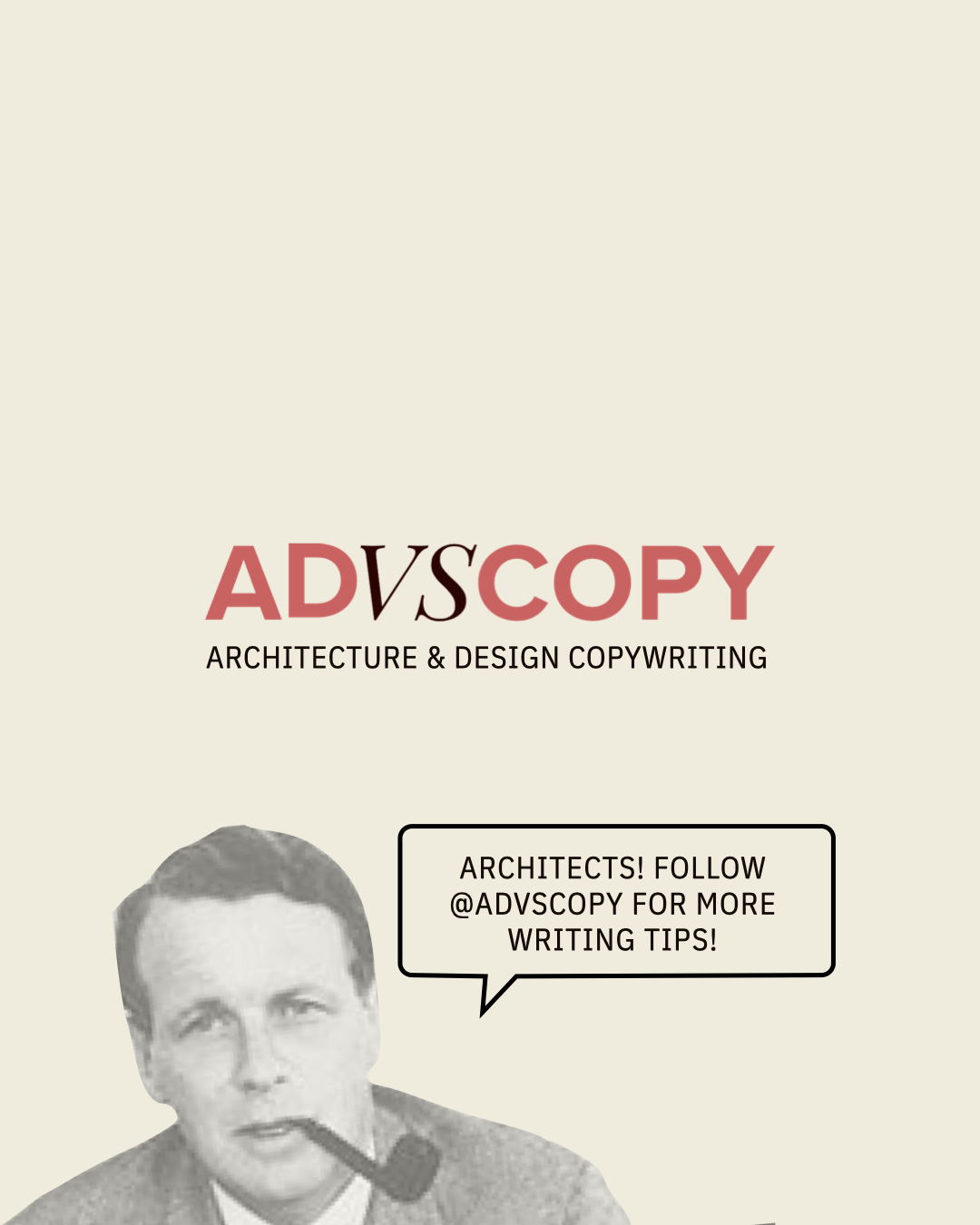Architectural Copywriting 101: My No.1 Tip for Architects & Designers
Let's start this series with my number one tip to improve your writing:
READ. YOUR. WRITING. OUT. LOUD.
A version of this post first appeared on instagram.
Follow @advscopy for more writing tips and inspiration.
That's it. Pretty simple, really. But so effective. And so very important for improving your communication with clients, prospects, and anyone else you hope to share your work with. This timeless advice applies to anyone writing anything in any field. It’s not just for architectural copywriting, but also proposal writing, fiction and nonfiction writing, as well as business and sales writers.
But you don't have to take my word for it.
Reading your copy aloud is recommended by top journalists, copywriters, and writing instructors.
Famed copywriter Gary Halbert has this to say on the matter in The Boron Letters:
"Read your copy out loud. What happens when you read your copy out loud is that you will verbally stumble over all the places that are not smooth. Then, of course, what you do, is rewrite the rough spots and read the copy out loud again. And, what you do, is you keep repeating this process till your copy is completely smooth and you can read it without stumbling at all...advertising writing needs to be the best writing of all. It needs to flow from start to finish without a bump or a bubble."
A quick aside: Some architects and other creative professionals may bristle at the term “advertising writing,” but I think it’s great. After all, advertising writing—copywriting in general, really— is nothing more than trying to sell something with words. When you’re writing about your work on a website or proposal or pitch deck, isn’t that what you’re trying to do? I think more architects could benefit from remembering that.
Rant over. Back to the matter at hand…
Noted architecture critic, journalist, and educator Carter Wiseman writes the following in his excellent book, Writing Architecture:
"Should you get stuck and wonder where your argument is leading, there is a time-honored writer’s device available: close your door and read what you have written out loud from the beginning. Most often, the momentum of your prose will point you in the right direction."
And finally, from my personal favorite writing handbook, Writing Tools by Roy Peter Clark, founder of the National Writers Workshop:
"To test your writing voice, the most powerful tool on you workbench is oral reading. Read your story aloud to hear if it sounds like you. When teachers offer this advice to writers, we often meet skeptical glances. 'You can't be serious,’ say these looks. ‘You don't literally mean that I should read the story aloud?'....No, I mean out loud, and loud enough so that others can hear....It can be read to hear the problems that must be solved."
So there it is, from across a spectrum of writers, the same advice:
READ YOUR WRITING OUT LOUD.
Read your writing out loud to make sure you’re not wobbling over your words or racing to finish a sentence before you finish your breath.
If you are, revise.
If your writing doesn't sound normal and flow well when you read it out loud, there’s a good chance it won't connect with your reader.
In that case, revise.
Doing this over and over will not only help you find and eliminate cumbersome jargon and exhausting sentences, it may even help you organize your thoughts, as the aptly named Wiseman notes in the above excerpt.
Oftentimes, when you’re reading things out loud, your brain will want to go in a natural direction — even if that’s not what’s on the page.
Listen to your brain.
I know, it's not always easy. But if it feels natural, chances are it makes more sense.

